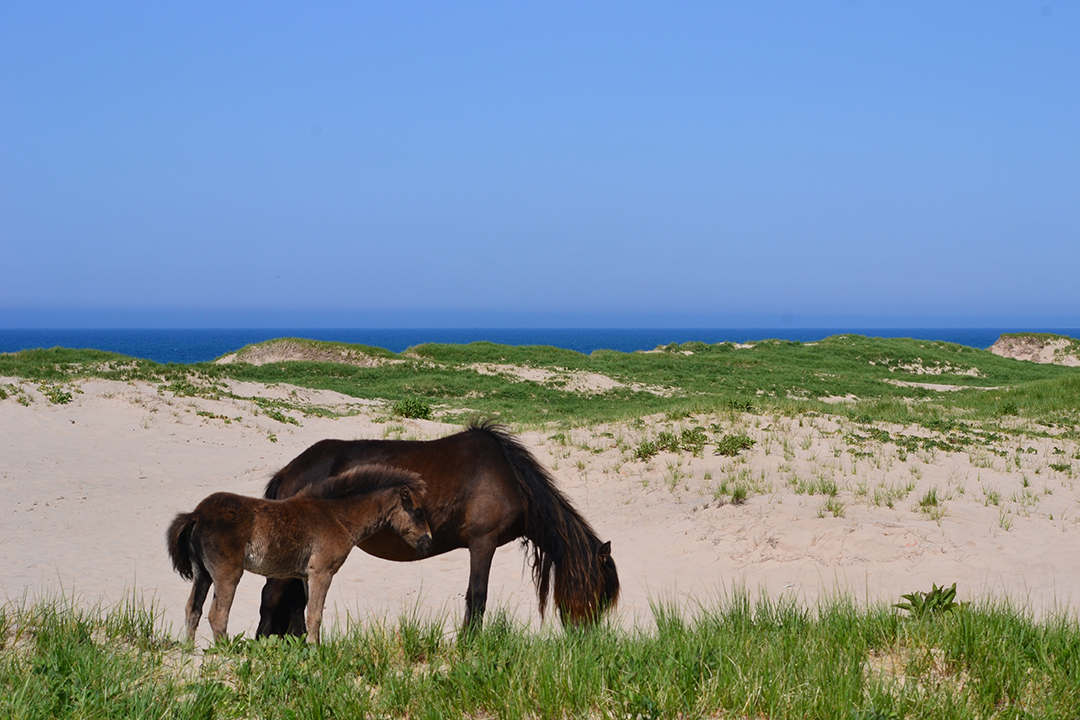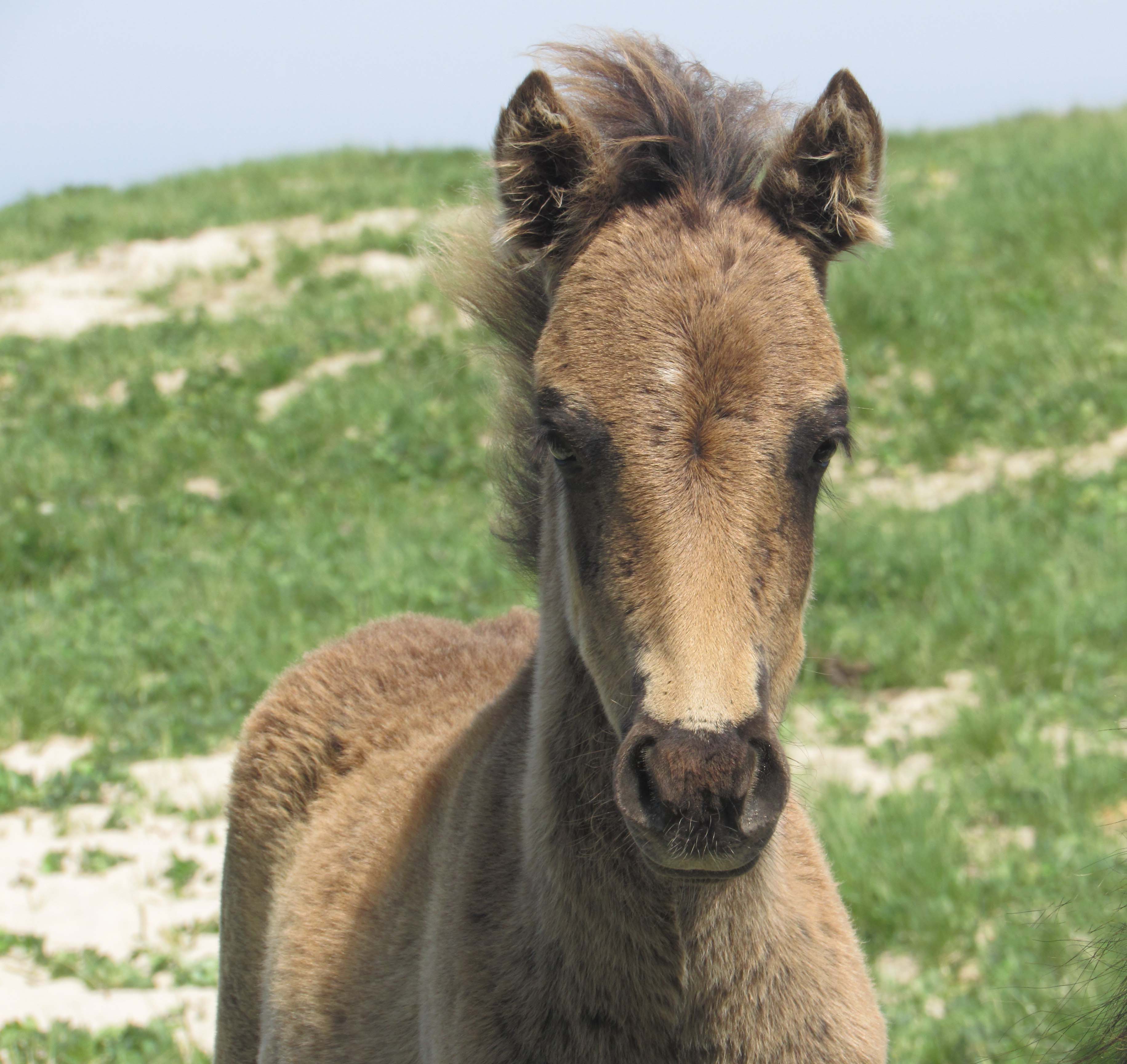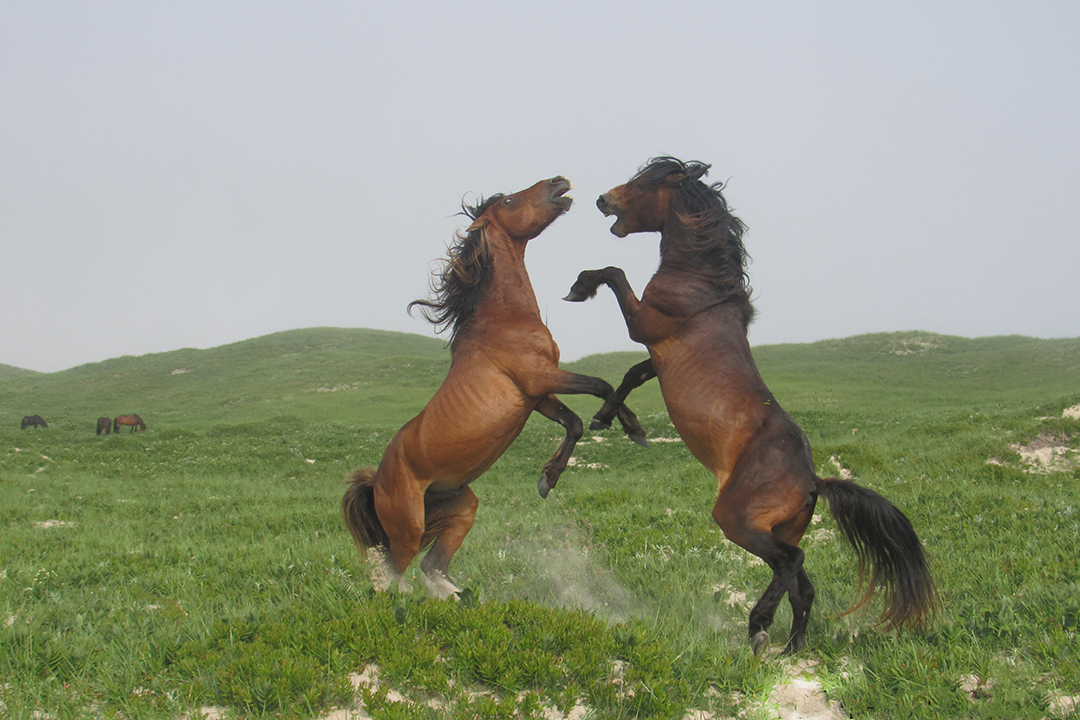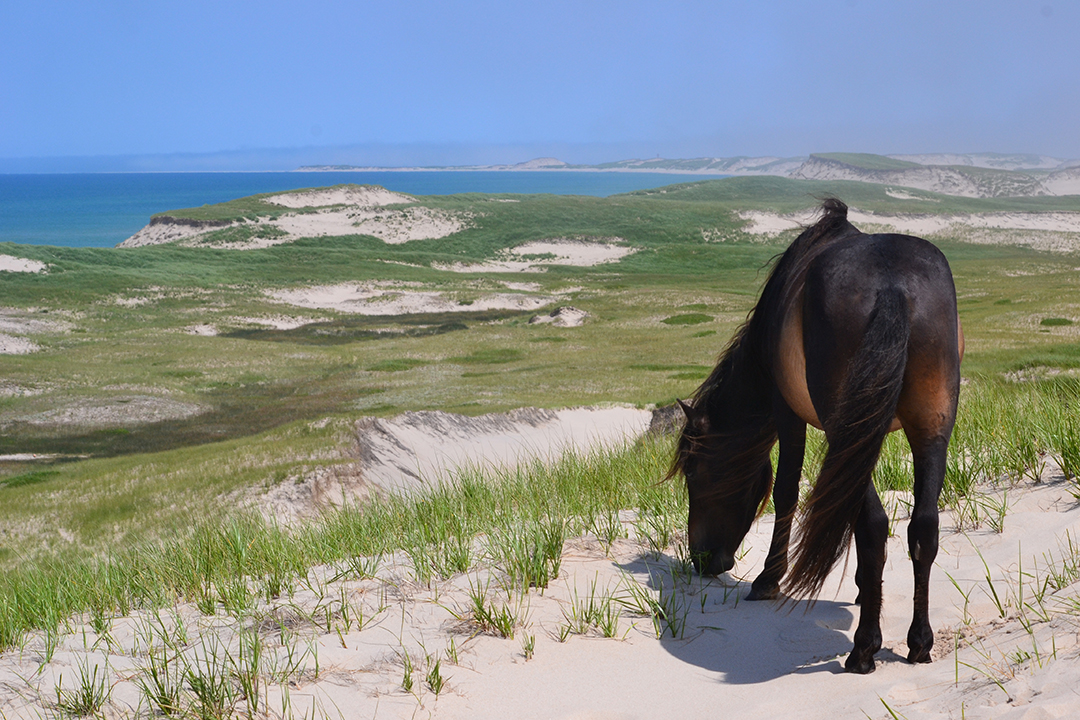
Study focuses on ‘incredibly wormy’ Sable Island horses
As you breathe in the crisp ocean air and follow hoofprints down the sandy beaches of Sable Island, you can see a band of the island’s iconic horses grazing in the distance.
By Martha Smith
While the scenery is breathtaking, another factor is causing these horses to have respiratory issues. For the first time ever, researchers have recently documented the presence of Dictyocaulus arnfeldi (D. arnfeldi) in the Sable Island horses — a finding that’s particularly interesting since the parasite hasn’t been found in domestic horses for 40 years.
D. arnfeldi is a lungworm that causes an infection of the lower respiratory tract in affected horses. Since donkeys are the parasite’s normal maintenance host, the lungworm’s presence in Sable Island horses “was a really unexpected finding,” says Dr. Emily Jenkins, a parasitologist at the Western College of Veterinary Medicine (WCVM).
“It was a surprise to find it because it hadn’t been reported on the island before. The conventional wisdom is that it shouldn’t be able to survive in a population of horses without the presence of donkeys.”
Common belief had been that the parasite could only be transmitted on pastures grazed by donkeys. Once a donkey sheds D. arnfeldi larvae in its feces, they are ingested by horses. The larvae then migrate to the airways and cause chronic coughing — the clinical signs of infection.
Since there are no donkeys on Sable Island, Jenkins decided to investigate further. After searching through the literature, she and her research colleagues found past evidence of lungworm transmission between horses.
“Historically when horses had a more natural reproductive cycle where there would always be young horses around, the parasite likely did have horse-to-horse transmission,” says Jenkins. She adds that this information was probably forgotten since the parasite has been virtually eradicated in domestic horses.
Another unusual aspect of this infection was the age of the infected horses. Lungworm is normally passed in feces of foals and yearlings. Infected adults typically do not shed larvae in their feces but are more likely to be symptomatic. However, tests revealed larvae in the feces of more than a third of adult horses on Sable Island in the spring.
The lungworm isn’t usually fatal for horses, and in the case of the Sable Island horses, not many researchers had even noticed coughing among the population. Still, Jenkins points out that the discovery is significant since it represents one of the novelties of studying this specific horse population.
“Individually, in heavy worm burdens, it [the lungworm] can cause irritation to the airways. It is not likely the cause of death, but can be a contributing factor,” says Jenkins. “Because there are so few populations left of horses that have Dictyocaulus arnfeldi, I think it is a neat opportunity to study the epidemiology of the lungworm.”

Unmanaged since the 1960s, the Sable Island horses are a closed population — meaning they have no contact with domestic horses, which makes them an ideal study population.
Population ecologists and Parks Canada researchers have rigorously studied the Sable Island horses since 2007. Jenkins joined the research team in 2017 when she travelled to the island to join the research team and investigate the causes of death of about 10 per cent of the horses.
Through post-mortem and fecal examinations, the researchers have been able to screen the horses for infectious agents and mineral deficiencies. Among their findings, the researchers have discovered other respiratory pathogens (viruses and bacteria) and high gastrointestinal parasite levels — a major area of interest.
“The Sable horses have much higher parasite loads in comparison to domestic horses and even other feral horse populations,” says Jenkins. “The first horse [carcass that] we opened had every parasite I had ever learned about.”
Jenkins, a professor in the WCVM’s Department of Veterinary Microbiology, considers the Sable Island horses to be a wonderful learning opportunity that provide copious amounts of teaching material for future veterinarians. Rather than just referring to textbooks, Jenkins can use the Sable Island population as real teaching specimens, and she has actual photos and specimens to show the students.

With anthelminthic (deworming) resistance becoming a looming threat for the world’s horse industry, there’s a need for better management and deworming practices. As Jenkins point out, the Sable Island horses present a unique opportunity to learn about equine parasites — information that can be used to develop more effective treatment protocols.
By studying the epidemiology of the infections, the researchers can determine which parasites should be targeted for horses of different ages and in different populations. Jenkins suggests that best practice is to determine high, moderate and low shedders (through feces analysis) in individual populations and to treat only horses with high burdens or evidence of clinical disease.
“The Sable horses can teach us to use our anthelminthics more wisely and to take a more science- and evidence-based approach rather than just reacting to fear that may or may not be justified about the actual effects of parasites,” says Jenkins.
“We have to get smarter with how we use the products that we have that still work in domestic horses.”
She points out that even though we do have access to these drugs, good management practices are extremely important. For example, horse owners can effectively remove larvae by meticulously “pooper scooping” their pastures.
Sable horses can also provide insight into genetic markers that indicate parasite resistance. The fact that these horses are “incredibly wormy” but are able to survive with such high parasite levels indicates the possibility of breeding horses for parasitic resistance. As well, parasites in Sable horses have never been exposed to anthelmintic drugs, making them unique worldwide.
Whether the Sable Island horses are providing more knowledge about parasites of the past, or helping future veterinarians and scientists to prepare for the future, they have truly proven to be an excellent resource for equine parasitology education and research.
“They are a snapshot of the ancestral horse populations,” says Jenkins. “[They’re] what horses were like before people came along, and they provide a unique opportunity to look at a closed population that is not managed in any way.”
Funding sources for this research include the WCVM’s Townsend Equine Health Research Fund and the L. David Dubé and Heather Ryan Veterinary Health and Research Fund. The Natural Science and Engineering Research Council of Canada (NSERC) contributed through Discovery Grants held by Jenkins, Phil McLoughlin and Jocelyn Poissant. An NSERC Undergraduate Summer Research Award and the WCVM’s Interprovincial Undergraduate Summer Research program also supported Smith’s summer position.
View research article published in the International Journal for Parasitology: Parasites and Wildlife (published April 2020).
Martha Smith of Jasper, Alta., is a fourth-year veterinary student at the Western College of Veterinary Medicine (WCVM) whose story is part of a series of articles written by WCVM summer research students.
